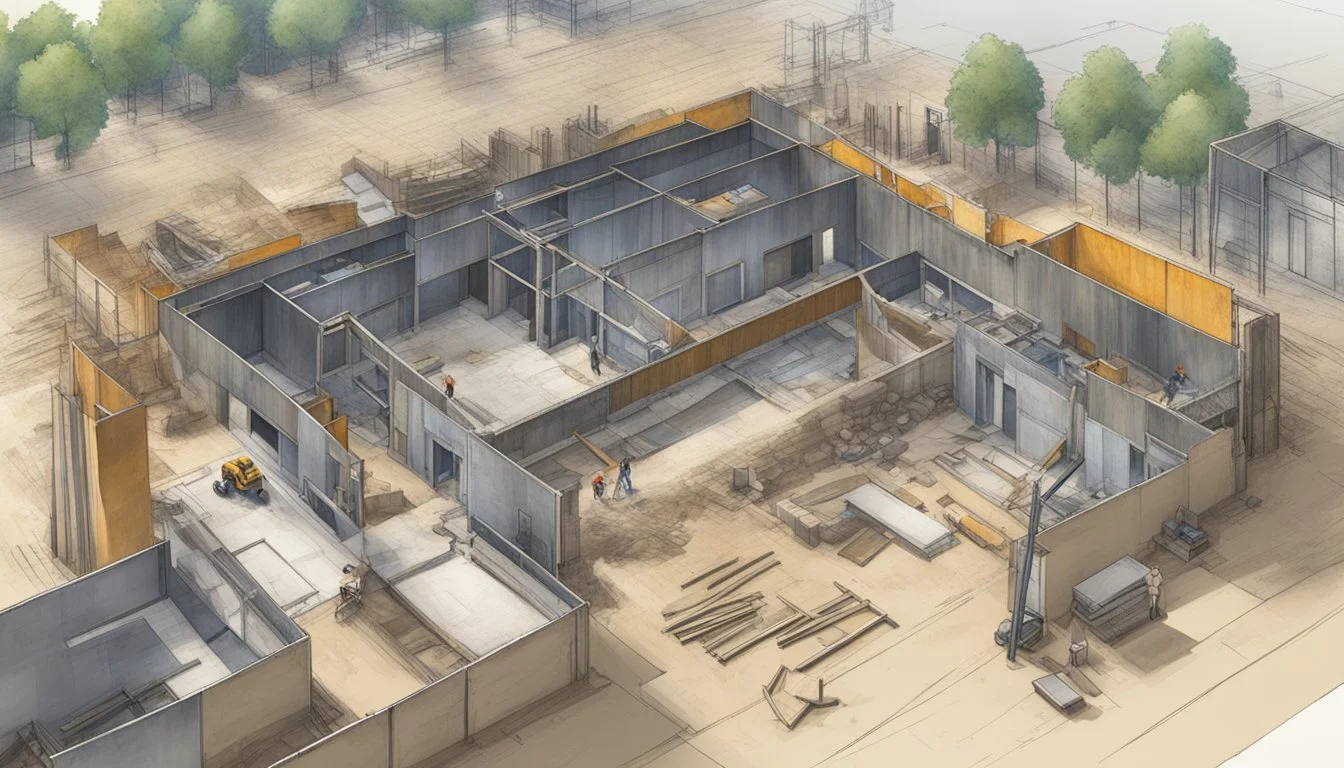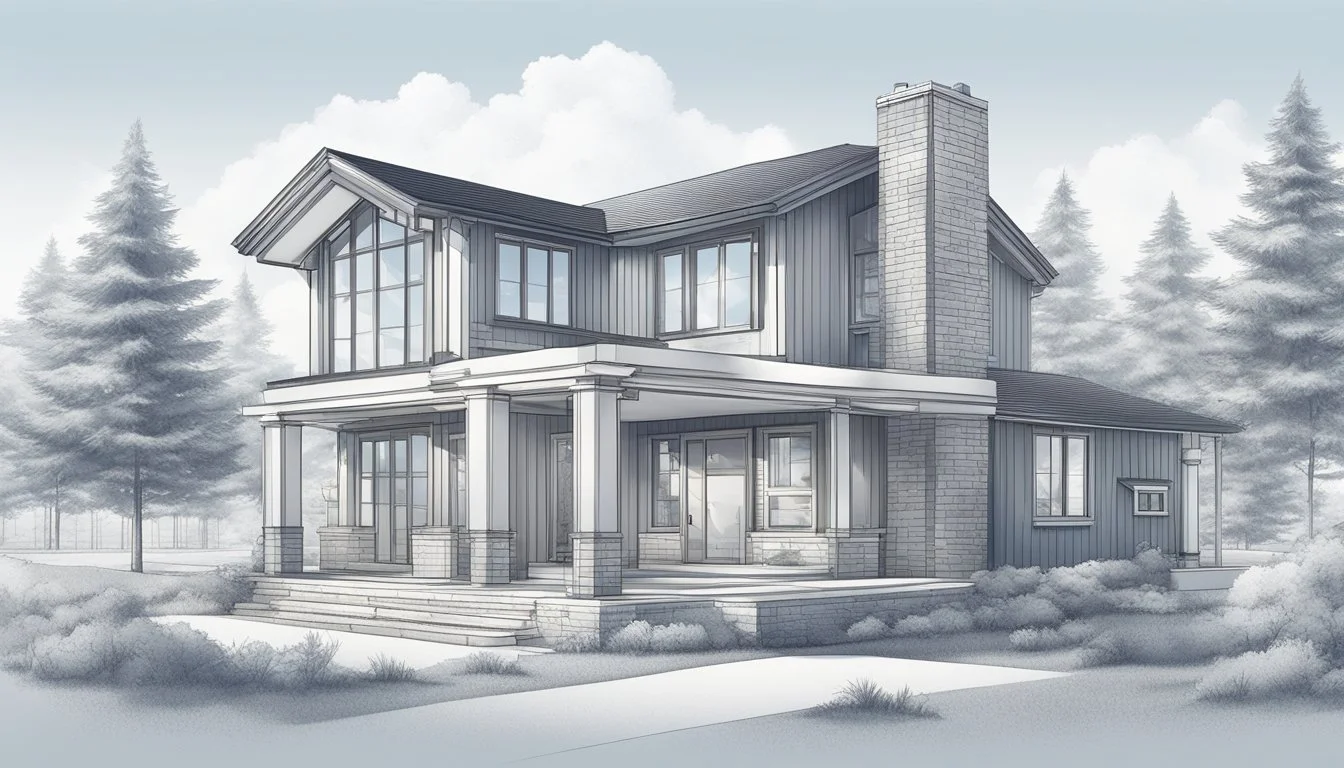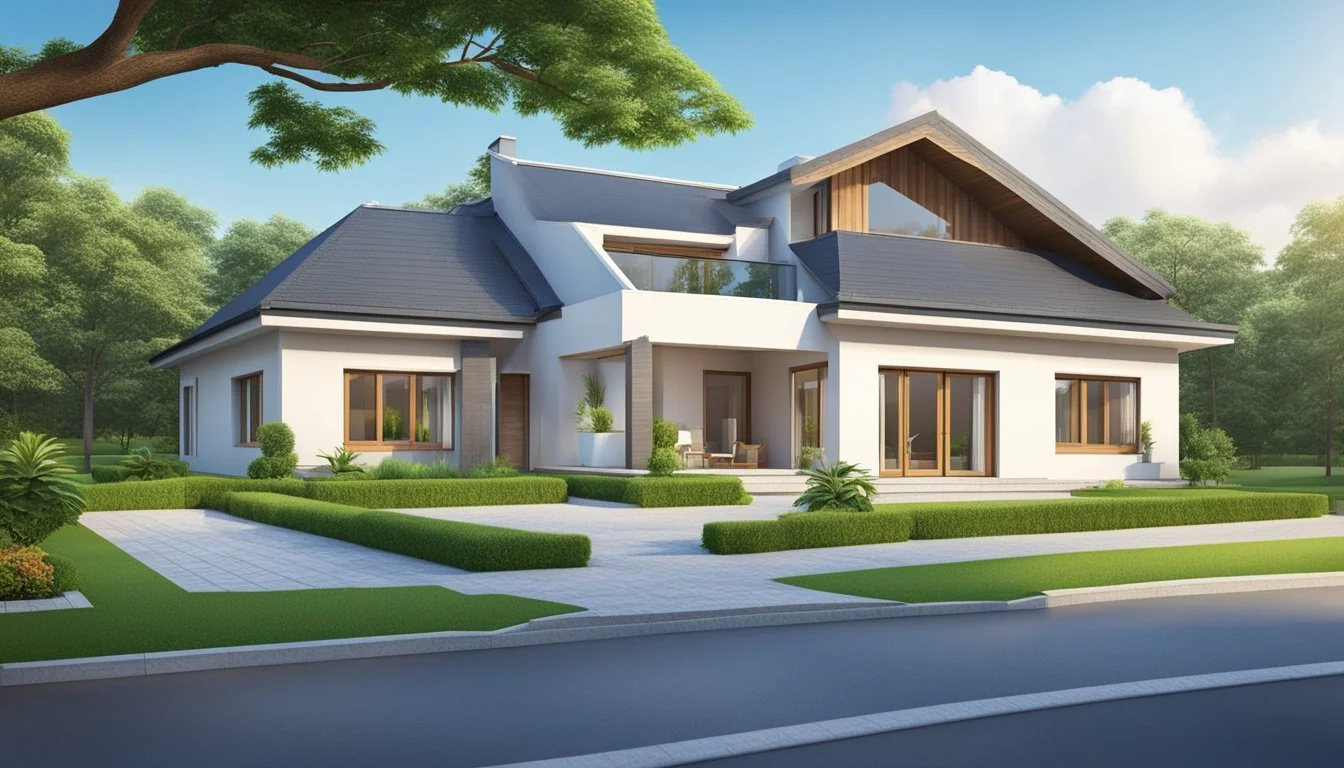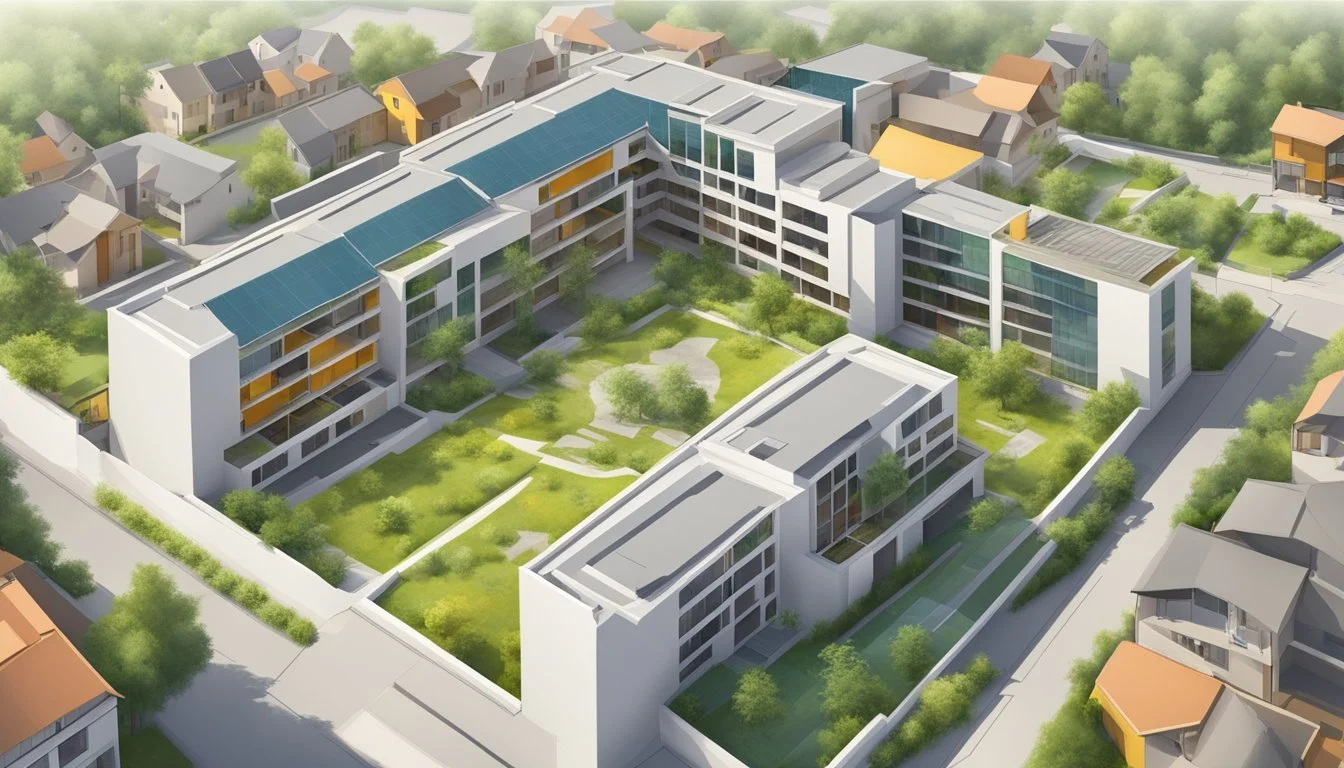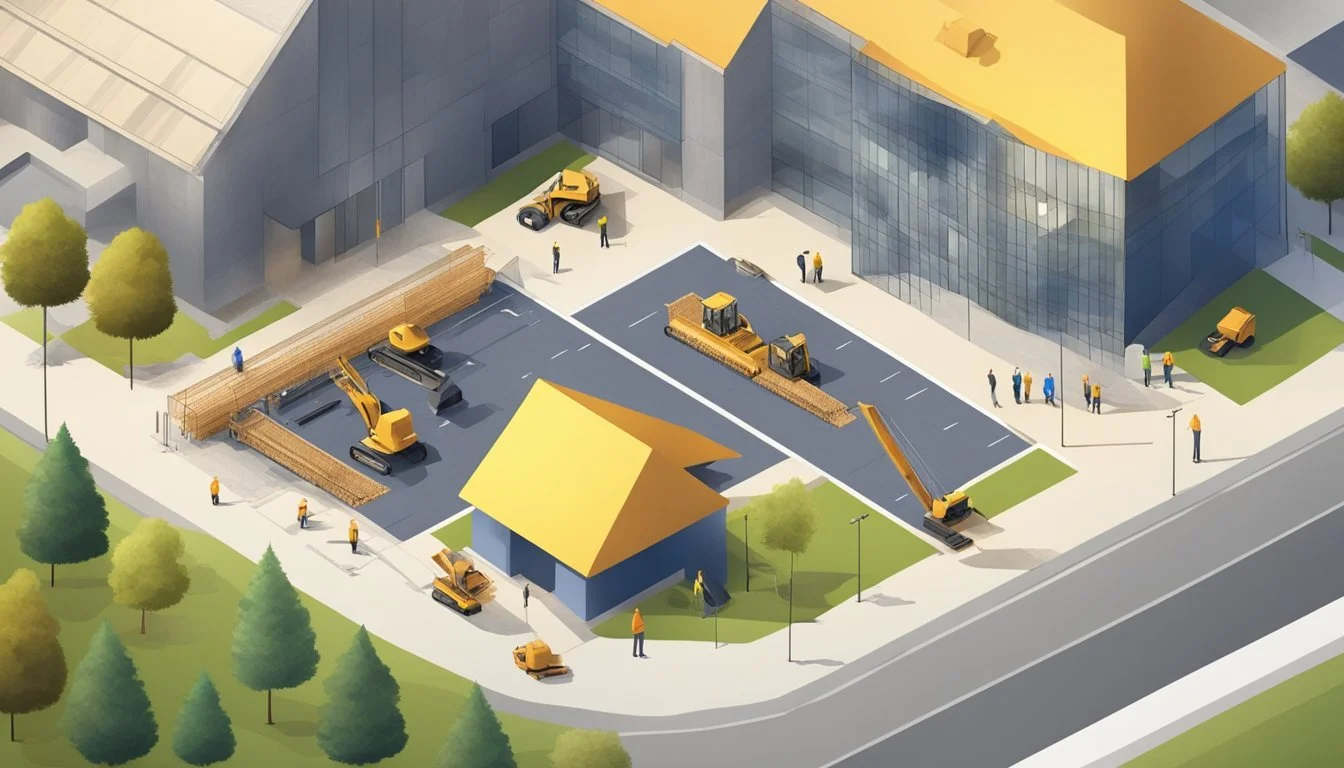How to Renovate and Build on Free Land
Essential Tips and Tricks
Embarking on the journey of renovating and building on free land opens up a world of opportunities for achieving your vision of the perfect home. Whether you're starting from scratch or enhancing an existing structure, this adventure allows you to unleash your creativity and maximize your investment. Transforming free land with thoughtful renovations can lead to substantial savings and a personalized living space.
A well-planned renovation is crucial to turning your vision into a reality. From cleaning up the exterior to modernizing interiors, there are numerous budget-friendly steps to enhance the property. By focusing on cost-effective improvements, you can significantly boost the aesthetic appeal and functionality of your home without breaking the bank. Moreover, having a clear strategy and understanding the project's scope ensures that the renovation process remains smooth and efficient.
Collaborating with experienced professionals can further streamline the renovation. Leveraging the insights and skills of designers and contractors familiar with similar projects helps to avoid costly mistakes and optimizes the use of resources. Their expertise can provide valuable guidance, transforming your free land into a dream home tailored to your needs and preferences.
Planning Your Renovation
Efficient planning is critical to the success of any renovation project. It involves understanding legal requirements, setting specific goals, budgeting, designing, selecting professionals, and creating timelines.
Understanding Local Zoning and Building Codes
Before starting any renovation, it’s essential to research local zoning and building codes. These regulations can dictate what renovations are permissible and can impact elements such as building height, property use, and required permits. Consulting with your local planning department or a knowledgeable architect can help ensure compliance. Non-compliance can lead to fines or costly modifications.
Setting a Clear Renovation Goal
Define specific objectives for your renovation. Identifying whether you are expanding living space, upgrading systems like plumbing or electrical, or merely improving aesthetics can shape your entire project. Clear goals help in directing efforts and securing materials and services that align with your vision. Clear goals also assist in maintaining focus and measuring progress.
Creating a Realistic Budget
Establish a detailed renovation budget. Factor in costs for materials, labor, permits, and unexpected expenses. Including a contingency fund—typically around 10-15% of the total budget—helps address unforeseen issues. Utilize software tools or spreadsheets to keep track of estimates and actual expenses. Stick to your budget to avoid financial stress.
Designing Your Space
Work with a professional designer or architect to create a detailed plan for your renovation. This should include floor plans, material specifications, and design elements. Focus on functionality and aesthetics. Ensuring that your design complies with the building codes and fits within your budget is crucial. Effective design enhances both living comfort and property value.
Choosing the Right Contractor
Selecting a qualified contractor is pivotal. Look for licensed professionals with strong references and a portfolio of similar projects. Conduct interviews to gauge their experience and reliability. Clear communication with your contractor about expectations, timelines, and budget constraints is vital. A well-chosen contractor can significantly impact the quality and smooth execution of your renovation.
Drafting a Detailed Timeline
Create a timeline outlining all phases of the renovation, from initial planning to final touches. Break down tasks into manageable sections, assigning timeframes to each. This helps in tracking progress and making necessary adjustments. Ensure that the timeline is realistic, considering potential delays. Regularly review and update the timeline with your contractor to stay on schedule.
Preparing for Construction
Before starting construction, evaluating the site, securing permits, and arranging temporary storage are essential steps. Each step ensures a smooth process and avoids potential setbacks.
Conducting a Site Evaluation
Site evaluation is crucial for identifying the site's current condition.
Assessing the land: Look for any physical barriers, such as existing structures or large trees that might need removal. Consider factors like soil stability and drainage.
Environmental considerations: Check for any environmental restrictions, such as protected wildlife or flood zones.
Planning for utilities: Ensure access to basic utilities like water, electricity, and internet. This step might involve coordinating with local utility companies.
Proper site evaluation helps in planning the construction process effectively and foreseeing possible challenges.
Securing Necessary Permits
Obtaining the required permits is a critical legal step.
Local regulations: Each region has specific building codes and regulations. Familiarize yourself with these requirements early on.
Permit types: Permits may include zoning permits, construction permits, and environmental permits. Each serves a different purpose, such as validating the building’s planned use or ensuring it's safe and environmentally compliant.
Application process: Collect the necessary documentation, which might include site plans and project descriptions. Submit these to the relevant local authority and await approval.
Securing permits ensures that construction abides by local laws and avoids legal issues.
Arranging Temporary Storage Solutions
Having a plan for where to store materials and equipment during construction is vital.
Types of storage: Consider temporary on-site storage like shipping containers or off-site rented spaces. Choose based on what items need storing and the site layout.
Security measures: Ensuring items are safe from theft or damage is crucial. Invest in secure locks or surveillance systems.
Organizational aspects: Keep frequently used items accessible. Proper labelling and inventory management will save time and reduce confusion.
Temporary storage solutions prevent disruption, protect materials, and keep the site organized.
Executing the Build
During the build, it's crucial to effectively manage subcontractors, ensure safety protocols are followed, and incorporate elements of energy efficiency and sustainability. Attention to detail in these areas can streamline the process and result in a high-quality, efficient final structure.
Managing Subcontractors
Effective management of subcontractors is essential. Clearly define roles and expectations. Regularly scheduled meetings ensure everyone is on the same page. Use written contracts to avoid misunderstandings.
Provide a detailed project timeline, breaking down what needs to be done at each stage. Utilize project management software to track progress and communicate updates. Regular site inspections help ensure the work meets quality standards.
Selecting reputable subcontractors with proven track records is key for maintaining efficiency and quality throughout the build.
Following Best Practices for Safety
Prioritizing safety is non-negotiable in any construction project. Conduct thorough risk assessments before starting. Provide personal protective equipment (PPE) such as helmets, gloves, and safety vests to all workers.
Implement regular safety training sessions. Ensure that all equipment is properly maintained and inspected. Establish clear protocols for emergency situations. Use signage to denote hazardous areas on-site to keep everyone alert.
Regular safety checks can minimize the risk of accidents, maintaining a safe working environment for all involved.
Incorporating Energy Efficiency and Sustainability
Incorporating energy-efficient and sustainable practices can significantly enhance the long-term value of the building. Opt for natural light solutions like skylights and large windows to reduce reliance on artificial lighting.
Use energy-efficient materials such as insulation and ENERGY STAR-rated appliances. Consider renewable energy sources like solar panels. Install smart home systems to monitor and control energy usage.
Sustainability can also be integrated through the use of recycled materials and environmentally friendly construction methods. Planning for future efficiency helps in reducing the building’s carbon footprint.
By focusing on these elements, the final structure can be both environmentally friendly and cost-effective in the long term.
Interior and Exterior Finishing
Selecting the right materials and finishes, installing fixtures and appliances, and implementing final design elements are crucial steps in both interior and exterior finishing. Attention to detail in these areas ensures the project’s success, adding character, comfort, and value to your property.
Selecting Materials and Finishes
The choice of materials and finishes is pivotal. For interiors, paint, wallpaper, and flooring options like carpet, hardwood, and tile can vastly influence the space's ambiance. Walls might benefit from a mix of wallpaper and paint to create focal points. Exterior finishes, such as siding, brick, or stone, should complement the design and provide durability.
Engaging an interior designer can help in selecting cohesive materials that reflect personal style and function. For example, using eco-friendly options contributes to sustainability. Pay attention to textures and colors to create a balanced aesthetic.
Installing Fixtures and Appliances
Proper installation of light fixtures, plumbing, and appliances is essential. For interiors, modern light fixtures and skylights can enhance both functionality and ambiance. Kitchens and bathrooms should be equipped with energy-efficient appliances that provide long-term savings.
Ensure that electrical and plumbing systems are up to code and professionally installed to avoid future issues. Light fixtures should be strategically placed to improve the room's usability and look. For skylights, consider their positioning to make the most of natural light, which can significantly enhance the room’s character and comfort.
Implementing the Final Design Elements
The final design phase brings together all previous steps into a cohesive look. This includes adding decorative accents such as trim, moldings, and custom cabinetry. On the exterior, adding elements like awnings or porches can enhance curb appeal.
Each detail, from the type of door handles to the color of the paint, contributes to the overall aesthetic. Focus on personalizing the space to reflect unique tastes while ensuring durability and comfort. Custom wall features or shelving can create eye-catching facets that also serve practical purposes.
By carefully selecting and implementing these elements, the final result will be both functional and visually pleasing, making the most of the free land on which the project is built.
Renovating Key Spaces
To transform free land into a comfortable home, focus on key living areas that enhance functionality and comfort. Key renovations include upgrading the kitchen, modernizing bathrooms, creating inviting living areas, and designing tranquil bedrooms.
Revamping the Kitchen
Start with the kitchen, as it’s often the hub of the home. Consider custom cabinetry to maximize storage. Update appliances to energy-efficient models, enhancing both functionality and savings.
Countertops: Opt for durable materials like granite or quartz.
Layout: An open-concept layout can make even smaller kitchens feel spacious.
Lighting: Install task lighting under cabinets to improve workspaces.
Paint: Fresh paint can revitalize the space; choose neutral tones for a timeless look.
Flooring: Consider easy-to-clean options like tile or hardwood.
Updating Bathrooms
Modern bathrooms significantly boost a home’s appeal. Update fixtures such as sinks, bathtubs, and toilets with contemporary designs.
Tiles: Use large tiles for a sophisticated appearance.
Vanities: Choose floating vanities to create the illusion of more space.
Storage: Add sufficient storage to keep essentials organized.
Lighting: Soft, adjustable lighting can enhance the relaxing atmosphere.
Water Efficiency: Install low-flow faucets and showerheads to reduce water usage.
Creating Comfortable Living Areas
Living rooms should offer relaxation and entertainment.
Layout: Arrange furniture to facilitate conversation and provide clear pathways.
Seating: Use comfortable, durable seating options suitable for both adults and kids.
Decor: Personalize with artwork and plants to make the space lively yet cozy.
Storage: Built-in shelves can help manage clutter, keeping the room functional and neat.
Lighting: Layered lighting, including natural light, can make a room feel inviting throughout the day.
Designing Bedrooms for Tranquility
Bedrooms should be sanctuaries of calm.
Colors: Use soothing colors like blues and greens that promote restful sleep.
Furniture: Invest in quality mattresses and ergonomic furniture.
Storage: Incorporate built-in or walk-in closets for ample storage.
Lighting: Soft, adjustable lighting enhances the tranquil environment.
Decor: Keep decor minimalistic to maintain a serene atmosphere.
Landscaping and Outdoor Spaces
Creating an inviting and functional outdoor space involves thoughtful planning and careful execution. Designing comfortable living areas, enhancing curb appeal, and integrating useful features can significantly improve the usability and beauty of your property.
Designing Outdoor Living Areas
When designing outdoor living areas, it is essential to consider both comfort and aesthetics. Patios provide a solid, versatile foundation for seating and dining arrangements. Utilize weather-resistant materials such as stone, concrete, or brick to ensure durability.
Outdoor kitchens enhance the functionality, allowing families to cook and dine in the fresh air. Equip these areas with grills, sinks, and storage options. Including a fire pit can extend usability into cooler seasons, offering warmth and a cozy ambiance. Proper lighting, such as string lights or lanterns, ensures these spaces are usable after dark.
Landscaping features like an arbor or a pergola can provide much-needed shade and structure. These elements define the space and can also support climbing plants, adding a natural aesthetic touch.
Enhancing Curb Appeal Through Landscaping
Enhancing curb appeal starts with a well-maintained lawn. Select drought-resistant turf or ground covers that thrive in your climate to reduce maintenance. Incorporate a mix of shrubs, flower beds, and borders to add texture and color.
Strategically placed trees offer shade and can make a dramatic impact. Consider the growth rate and mature size to ensure they complement your landscape without overwhelming it. Driveway and walkway borders with colorful plants create a welcoming path to your home.
Using mulch not only helps retain soil moisture but also gives a clean, finished look to garden beds. Install low-voltage garden lighting to highlight paths and landscape features, ensuring safety and creating a pleasant nighttime environment.
Building Outdoor Features
Incorporating outdoor features like a fire pit, water feature, or an arbor can transform your yard into an oasis. Fire pits provide a focal point for gatherings and can be constructed from various materials, such as stone or metal, to fit the design.
A water feature, such as a fountain or pond, adds soothing sounds and a tranquil atmosphere.
An arbor can serve both functional and decorative purposes, providing a shaded walkway or a frame for climbing plants. Use treated wood or metal to ensure longevity.
Combining these elements effectively creates a cohesive and inviting outdoor environment perfect for relaxing or entertaining.
Final Touches
Addressing the final touches in your renovation and building project ensures everything is polished and your space feels complete. This includes decorating to reflect your personal style, conducting thorough inspections, and celebrating the completion of your project.
Decorating to Reflect Personal Style
Decorating is where your unique taste shines. Choose colors, furniture, and decorations that resonate with your personality.
Colors: Select a color palette that reflects your mood and preferences. Earthy tones create a calm atmosphere, while vibrant colors add energy.
Furniture: Invest in pieces that are both functional and stylish. Vintage finds can add character, while modern designs offer sleekness.
Decorations: Personal touches such as family photos, artwork, and plants can make a space feel truly yours. Lighting: Proper lighting enhances the ambiance. Consider layered lighting using ambient, task, and accent lights.
Experiment with different combinations until you achieve a balanced look that feels like home.
Conducting Final Inspections
Before settling in, it’s essential to perform thorough inspections to ensure everything is in top-notch condition.
Utilities: Check that all plumbing, electrical, and HVAC systems are functioning correctly.
Safety: Ensure that smoke detectors, carbon monoxide detectors, and fire extinguishers are in place and operational.
Structural Integrity: Look for any signs of damage or incomplete work in walls, flooring, and roofing.
Paint and Finishing: Verify that all paint jobs are even and that finishing work such as trim and hardware are properly installed.
Address any issues found during inspections promptly to avoid future problems.
Celebrating Your New Space
After months of planning and hard work, it's important to celebrate the culmination of your efforts.
Host a small gathering with friends and family to share your newly renovated space. Arrange a tour highlighting key features and changes you’ve made. Personal Touches: Display before and after photos to showcase the transformation. Prepare some favorite dishes or hire catering to make the event special.
Small gestures like personalized thank-you notes for contractors and helpers can add a heartfelt touch to your celebration.
Renovation Best Practices
When renovating and building on free land, it’s crucial to plan meticulously, maintain communication, and ensure quality. Addressing common mistakes, maintaining clear communication among all parties, and ensuring rigorous quality control are essential steps to a successful project.
Avoiding Common Renovation Mistakes
Thorough Planning: One of the primary mistakes in renovations is inadequate planning. Homeowners should start with a clear vision and detailed blueprint, considering all aspects including design, budget, and timeline.
Budget Contingency: Always overestimate the budget by at least 10-15% to cover unexpected costs. Contractor delays or material shortages often increase expenses.
Hiring Professionals: While DIY projects can save money, certain jobs require professional skills. Hiring experienced contractors ensures safety, compliance, and quality.
Permits and Codes: Overlooking permits and building codes can result in legal issues and project delays. Always verify requirements with local authorities before starting any project.
Maintaining Clear Communication with Your Team
Consistent Updates: Regularly updating all team members, including general contractors, designers, and subcontractors, keeps everyone aligned with the project's vision and progress.
Centralized Documentation: Keep all renovation documents and communications centralized, perhaps using an app like Thumbtack. This ensures transparency and easy access to critical information.
Responsibility Assignment: To prevent miscommunication, clearly define who is responsible for each task. This avoids duplications and ensures accountability.
Engage Neighbors: Early consultation with neighbors can prevent conflicts and promote a positive environment. Sharing your plans with them can smooth over any disruptions caused by the renovation process.
Ensuring Quality Control Throughout the Process
Regular Inspections: Schedule frequent inspections to ensure the work meets the required standards. This helps catch and rectify issues early on.
Material Quality: Use high-grade materials to ensure durability and compliance with building codes. Skimping on quality can lead to costly repairs down the line.
Professional Oversight: Having a general contractor or designer oversee the project can ensure adherence to the plan and professional quality.
Documentation: Maintain detailed records of progress and any changes made during the renovation. This documentation is invaluable if disputes arise or for future reference.
By focusing on these practices, homeowners can ensure a smoother, more successful renovation experience.

